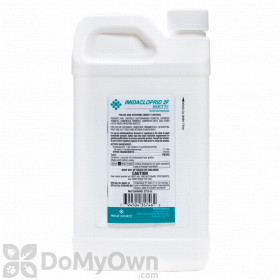When Should I Apply a Systemic Root Drench?

A systemic root drench application is a preventative measure to keep sucking insect pests from infesting your ornamental plants or trees. This type of treatment can be applied if you have an ornamental tree or shrub type that already shows signs of sucking insects or if you know these pests are a threat in your area. This long-term pest control solution will travel (or translocate) up the roots of a plant to provide complete prevention and control. This kind of treatment that spreads inside the body of a plant is called a systemic application.
Systemic treatments like a root drench application are different from the faster acting spray (or foliar) application in ease of application and in how long the effects last. Each type of application serves a purpose, however. In cases of an active infestation in your trees or ornamentals, we recommend that they be treated with both a systemic and a foliar application.
The foliar spray application will provide immediate action against the insects present on your plants at that moment and the systemic root drench application will work its way into the entire plant for defense against further infestation after the initial pests have been eliminated.
- Apply a systemic insecticide root drench once a year using a product containing imadacloprid or dinotefuran (our recommended active ingredients.) One application per year is recommended for both of these product types, and labeled usage limits should not be exceeded.
- Treat smaller trees in the spring after petal fall has occurred
- Treat larger trees in the fall to help them be ready for new growth in the spring
- For new plants, give them around two weeks to establish roots before applying this type of treatment
- This treatment is intended for ornamentals, not for edible species
- Linden and some other tilia species should be treated with other solutions to ensure pollinator safety
How Do I Perform a Systemic Root Drench?
Measure the Plant

Note the size of the trees or shrubs to be treated. You will need to measure the circumference (the distance around) of a tree's trunk at 48 inches up from the ground. If this is a multi-trunk tree, you will measure each trunk and add them together for a total trunk circumference.
Calculate the DBH

Using the total trunk circumference measurement, divide that number by 3.14 (or Pi) and round up to the nearest inch. This will be your Diameter at Breast Height (DBH) for the tree. This number will be used to determine the right amount of insecticide product to mix with water for a root drench application.
Mix the Solution

Mix the amount of product indicated on the product label with the correct amount of water in a large bucket or watering can for easy pouring over the treatment site. You will normally be adding a small amount of insecticide to a large amount of water. Once added, mix the solution by stirring or shaking the watering container.
Products needed for Step 3
Prepare the Area

Clear the base of the tree or shrub to allow full root access. Pull back any mulch, dead leaves, or other obstructions. You should give yourself clear access to the soil around the base of the plant before treatment.
Products needed for Step 4
Soak the Soil

Pour the full amount of liquid mixture around the base of the tree onto the mineral soil--that's the earth around the plant consisting of mostly sand, silt, and clay, not mulch or other organic material.
Treat the areas where roots grow below, but do not apply to the trunk of the plant itself. This usually means soaking the soil from the base of the trunk moving outwards about 1-2 feet to ensure optimum uptake. Treatments should not be taken past the dripline (the outer reach of the branches) of the tree.
How Soon Will I See Results after a Root Drench?
You may start to see results in the number of pests on your plants within a few days after a root drench treatment, but it can take several weeks for systemic pesticides to work their way through a larger tree's system.
For the best results, keep the soil around your plants and trees moist for 5-7 days after the application. Use at least one pint of water per inch of trunk diameter (DBH) to water daily and dampen the soil. Sandy soil may require more water to stay moist, while heavy clay soils may require less.
Products with the active ingredient dinotefuran typically achieve translocation through the plant faster than other insecticides, and may result in quicker pest elimination. Consult the label of any product you are considering to make sure it's a good fit for your application needs.








